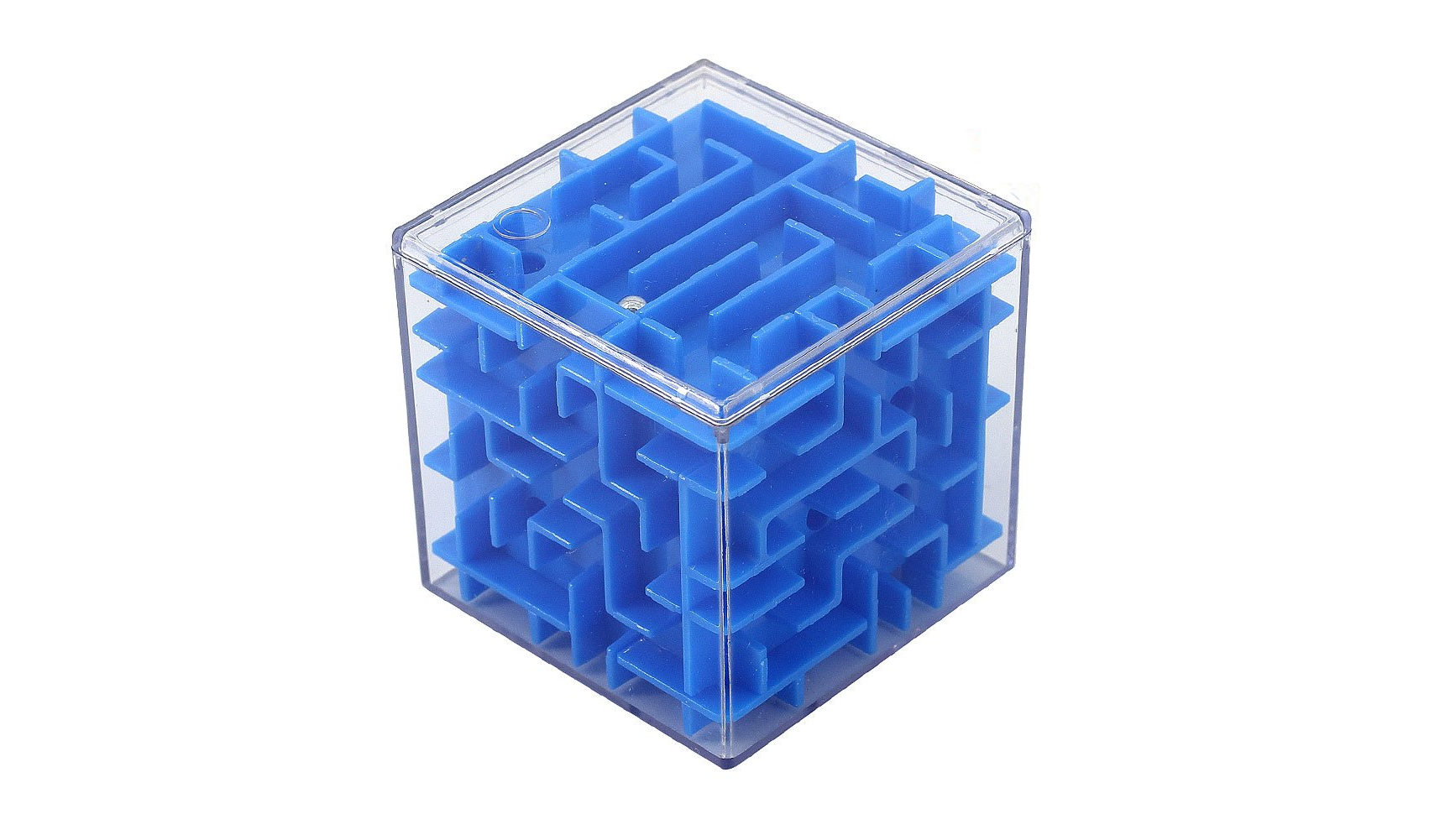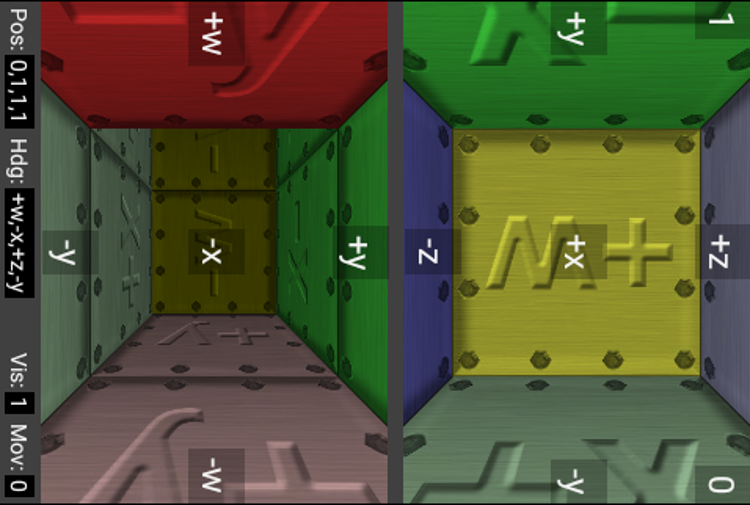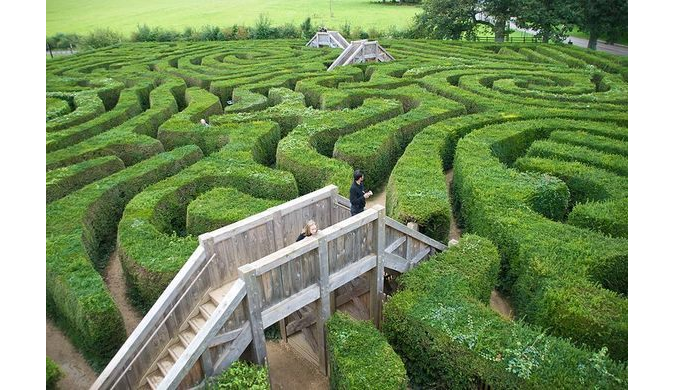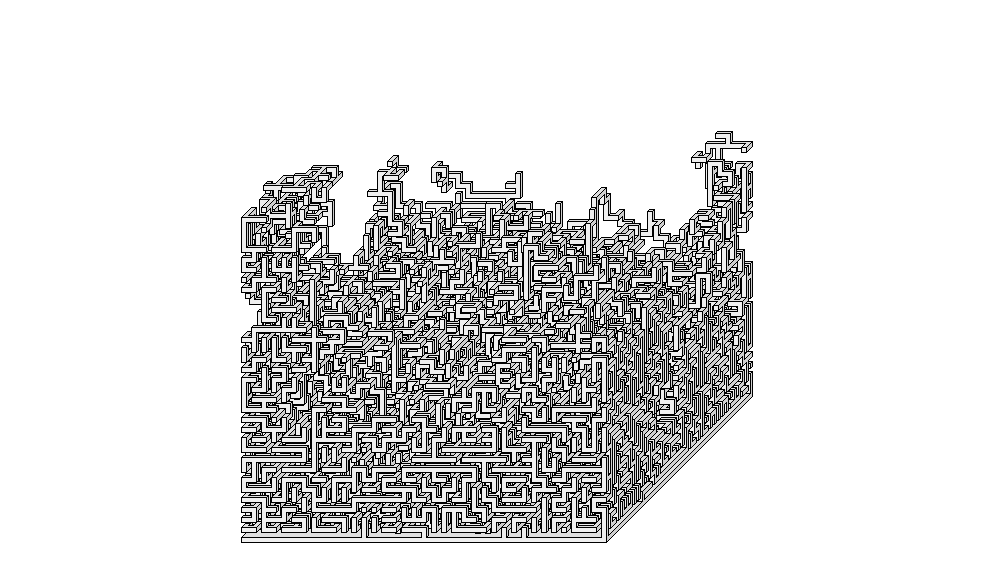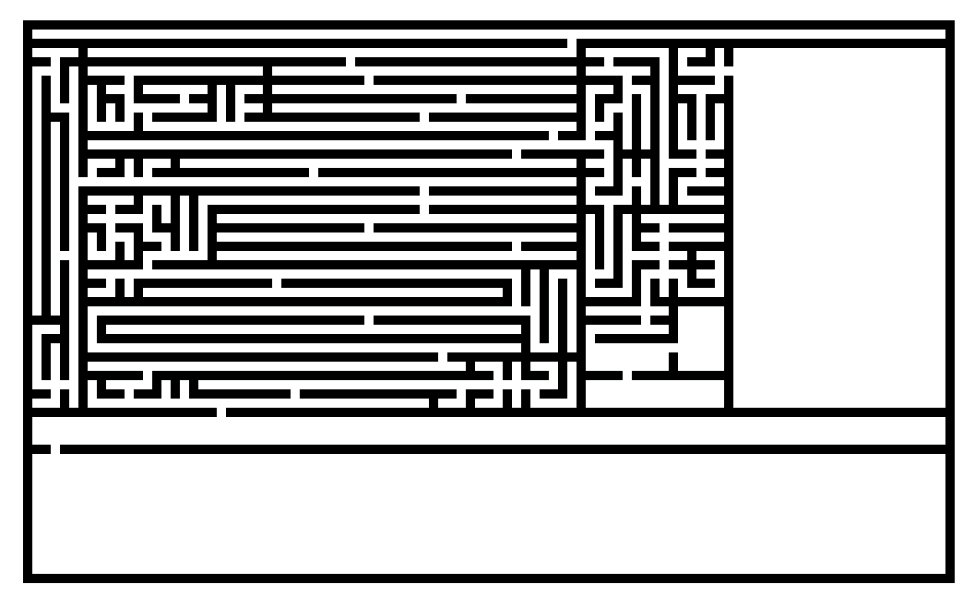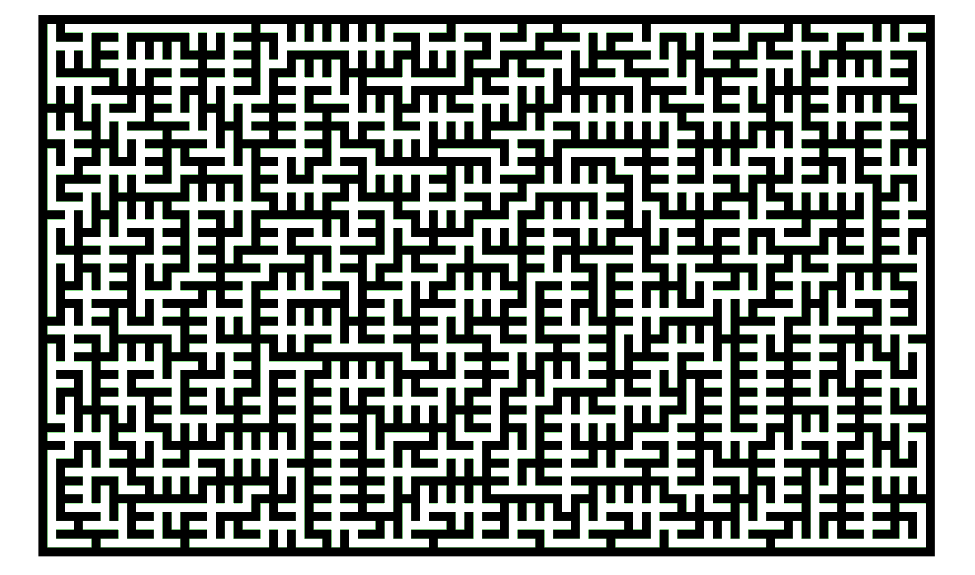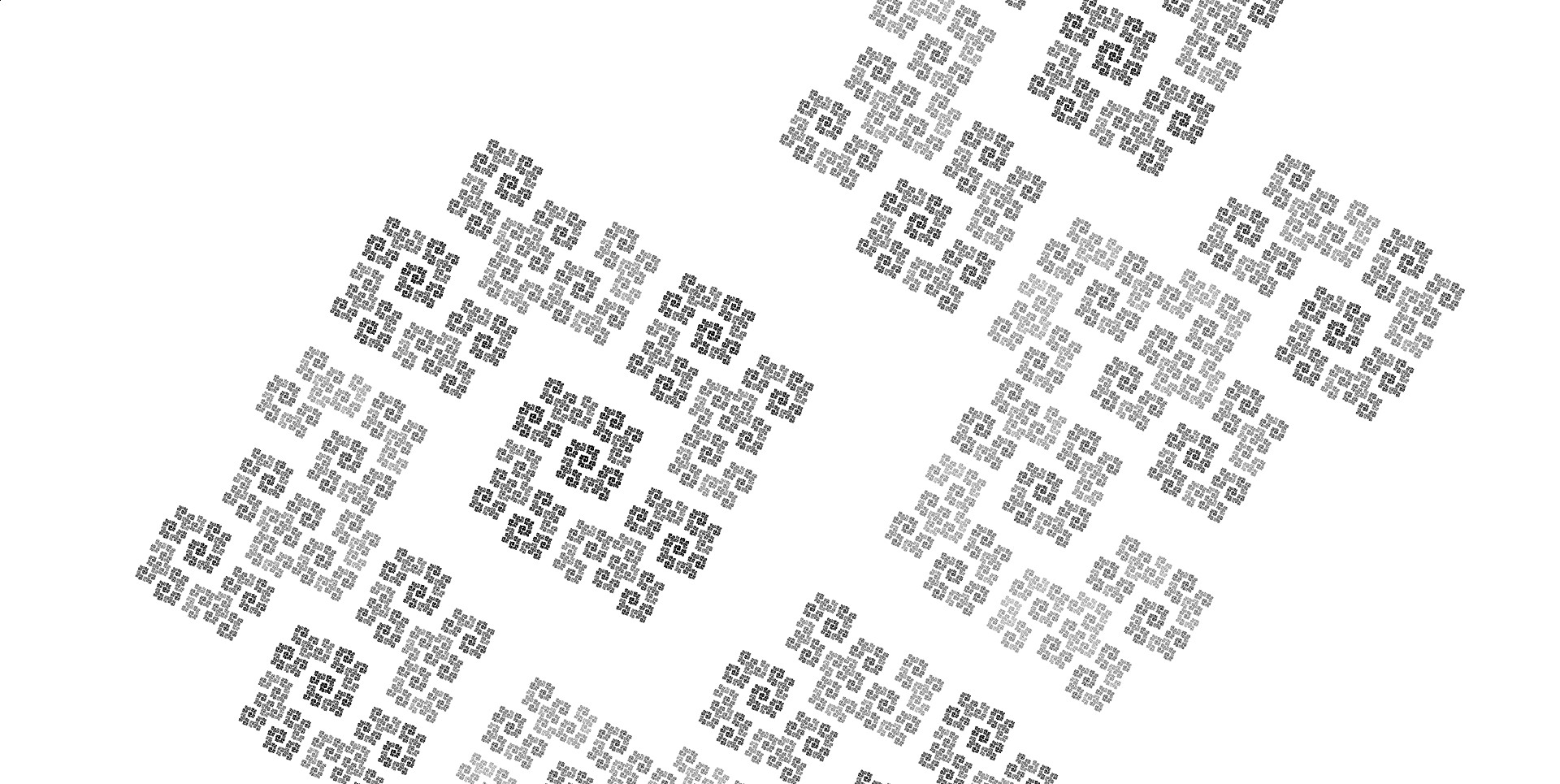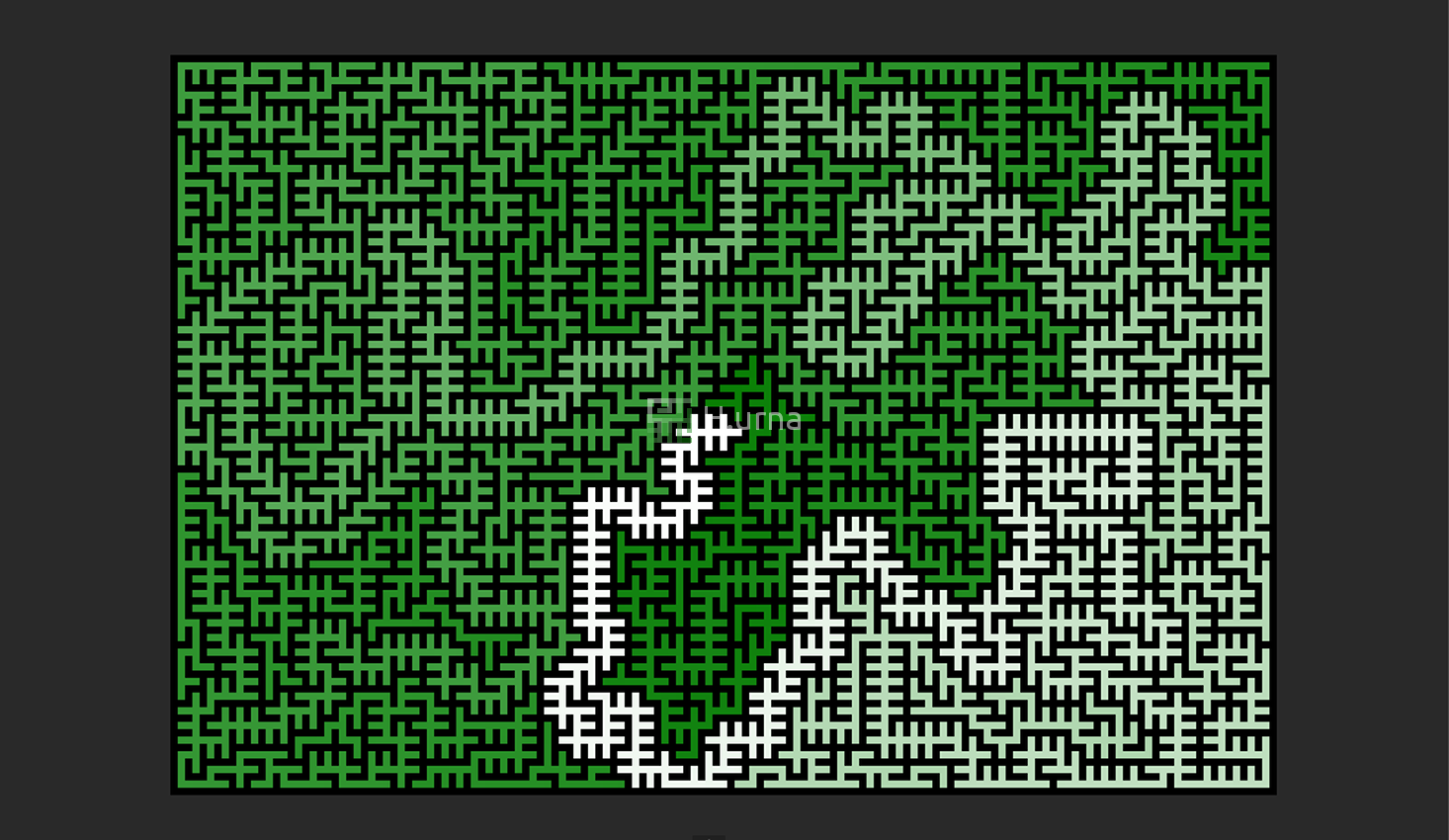Glossary
Dimension
The dimension class is basically how many dimensions in space the maze covers. Types are: 2D: Most mazes are this dimension, it's always possible to display them on a paper sheet and navigate it without overlapping any passages. 3D: maze with multiple levels, where passages may go up and down in addition to the 2D directions. A 3D maze may be seen as 2D mazes stack on each other. Higher dimensions: It's possible to have 4D and higher dimension mazes. These are sometimes rendered as 3D mazes, with special "portals" to travel through the 4th dimension (e.g. "past" and "future" portals). Weave (2.5D): A weave maze is basically a 2D (or more accurately a 2.5D) maze, but where passages can overlap each other. For instance real life size mazes that have bridges passing above other passages.
Direction
If there is direction, it means that certain passages can only be traveled in one way. In Computer Science terms, such mazes would be described by a directed graph, as opposed to an undirected graph.
Focus
This is just an algorithmic property (no visual difference at the end) when generating. The focus can be divided into two general types : wall adders, and passage carvers. The first start with an empty space where we add walls while the second start with a full block in which we carve passages.
Hyperdimension - Hypermaze
The hyperdimension class refers to the dimension of the object you move through the maze, as opposed to the dimension of the maze environment itself (hypermaze can only exist in a 3D or higher dimension environment). A hypermaze increases the dimension of the solving object and the passages themselves. In a normal Maze you move a point through it, and the path behind you forms a line. In a hypermaze you move a line through it, and your path forms a surface!
Routing
Routing refers to the types of passages geometry resulting from the maze generation strategy. Braid - Partial Braid: A "Braid" Maze means one without any dead ends. Such a Maze uses passages that coil around and run back into each other (hence the term "braid") and cause you to spend time going in circles instead of bumping into dead ends. A well-designed braid Maze can be much harder than a perfect Maze of the same size. Note that the adjective "Braid" can be used quantitatively. A "heavily braid Maze" will includes many loops or detached walls. Perfect - Simply-Connected: All the maze generation proposed at H.urna have a perfect routing. A "perfect" maze means being without any loops, closed circuits and inaccessible areas. From each point, there is exactly one path to any other point : the maze has exactly one solution. In Computer Science terms, such a maze can be described as a spanning tree. Sparseness: A sparse Maze is one that doesn't carve passages through every cell, meaning some are left uncreated. This amounts to having inaccessible locations, making this somewhat the reverse of a braid maze. A similar concept can be applied on wall adders algorithms (e.g. the Recursive Division), resulting in an irregular maze with wide passages and rooms. Unicursal: A unicursal Maze means one without any junctions. Such mazes are also called labyrinth, there are no tricks or dead ends : they have a single circuitous path instead and are most often used for relaxation, meditation or spirituality.
Tessellation
The tessellation class is the geometry of the individual cells that compose the maze. You may imagine any geometry you want; here is a small list of the common ones : Orthogonal (Rectangle cells), Crack (Amorphous), Delta (Triangle cells), Fractal (Recursive), Omega (Non-orthogonal), Sigma (Hexagon cells), Theta (Concentric Circles of passages), Upsilon (Octagons and Squares cells), Zeta (Orthogonal with diagonal passages allowed)... Images talk more than words, see below some of those 'common' types:
Texture
The texture class is subtle and describes the style of the passages in whatever routing, whatever geometry. This property is more qualitative than quantitative one. See below two of the flags often encountered with H.urna maze generators:
Topology
The topology class describes the geometry of the space the maze as a whole exists in: Normal: standard maze in Euclidean space. Planar: any maze with an abnormal topology. Examples are mazes on the surface of a cube, tore, sphere etc.


